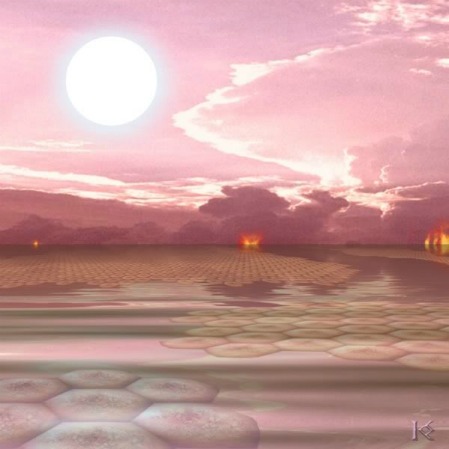
On a simmering ocean world, under an oversized blue-white star, the tendrils of one Qax reach out to the limb of another in the distance.
With over 700 exo-solar planets and counting, the infant intersection between astronomy and biology grew a new two-tiered rating system intended to identify worlds of interest. The first tier is obvious: earth-like worlds in mass and temperature, where water is a liquid (And pizza is not a vegetable). But the other set is less familiar:
(Space.com) — Researchers also propose a second scale, called the Planetary Habitability Index (PHI), which would take into account a range of chemical and physical parameters thought to be conducive to life in more extreme conditions not found on Earth. “Our proposed PHI is informed by chemical and physical parameters that are conducive to life in general,” Schulze-Makuch and his colleagues write in a paper published in the journal Astrobiology. “It relies on factors that, in principle, could be detected at the distance of exoplanets from Earth, given currently planned future (space) instrumentation.”
Since we know of no ET life, it’s mighty tough to say what it might need to thrive. Based only on solar-based and geothermal communities on earth, it’s a reasonable guess that life likes some stability mixed in with at least a trickle of energy. And those kinds of worlds could be very different from ours. Neutron stars, gas giants, metal bearing moons whizzing through the powerful magnetic field of a brown-dwarf, who knows? Given the broad parameters, my long shot pick for life in the solar system would be the Jovian moon Io. How about you?

My pick is Saturn’s moon Titan. While methane is a poor solvent compared to water, the idea of life taking advantage of a completely different kind of chemistry is still intriguing.
My bet is Europa. I think there may be life in the seas of that world.
Europa is actually too good of a choice to be a “long shot” pick.
On the Panda’s Thumb web site, Swedish commentator Torbjorn Larsson, citing the recent hypothesis of there being billions of planets, unconnected with a star wandering about the galaxy, opined that there could be numerous situations like Jupiter/Europa where life could be present on the satellite without a central star supplying the energy to support it.
Given fact that the current theory of stellar formation together with he discovery of exo-planets suggests that the number of planets in the universe is very likely commensurate with the number of stars, it would appear, just by the large numbers, that life is probably plentiful. The real question is the occurrence of intelligent life.